Steam Loco Wheelslip
#21

Posted 11 April 2016 - 05:11 AM
#22

Posted 11 April 2016 - 06:28 AM
#23

Posted 11 April 2016 - 08:51 AM
#24

Posted 12 April 2016 - 03:34 AM
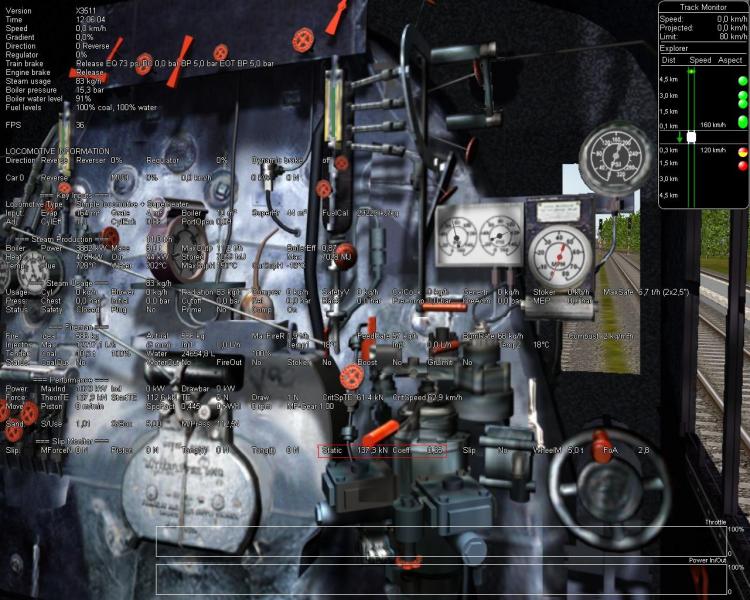
When you go forward static force increases, but this should not.
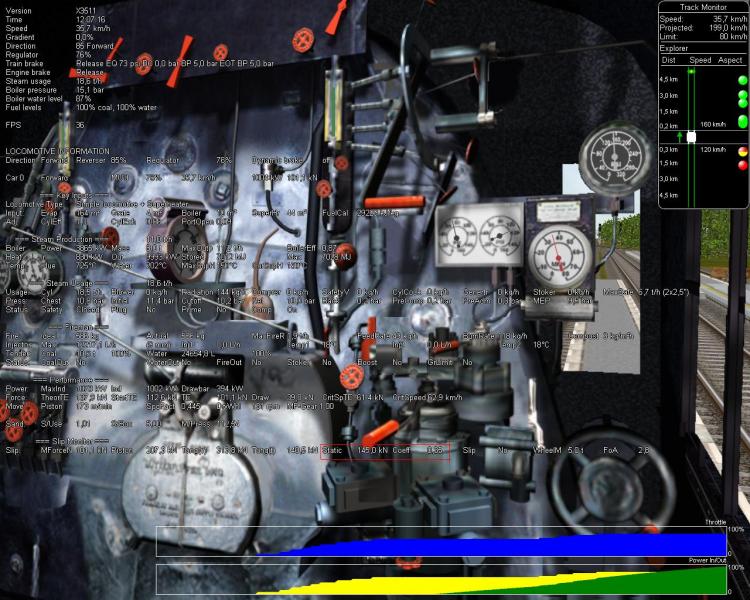
When you go backward backward static force decreases.
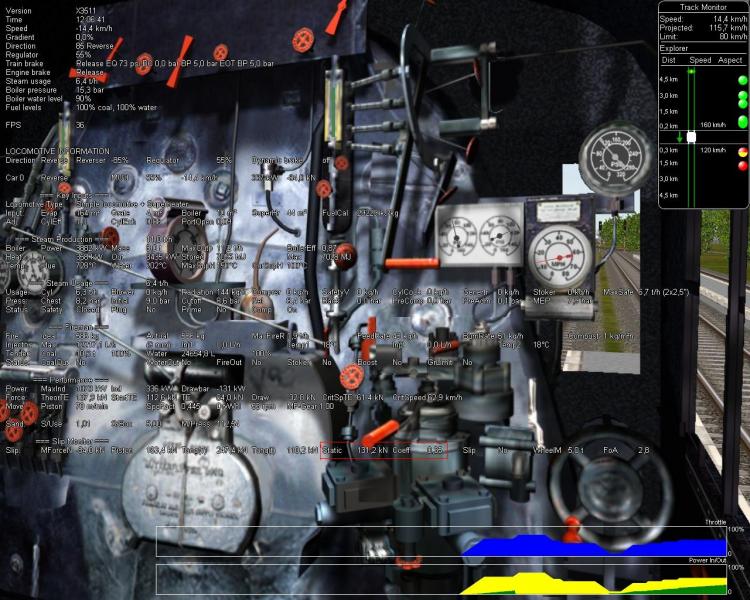
When you go speed 70kmh and close regulator static force is same as in speed 0. Static force and friction of adhesion are not dependent on the speed.
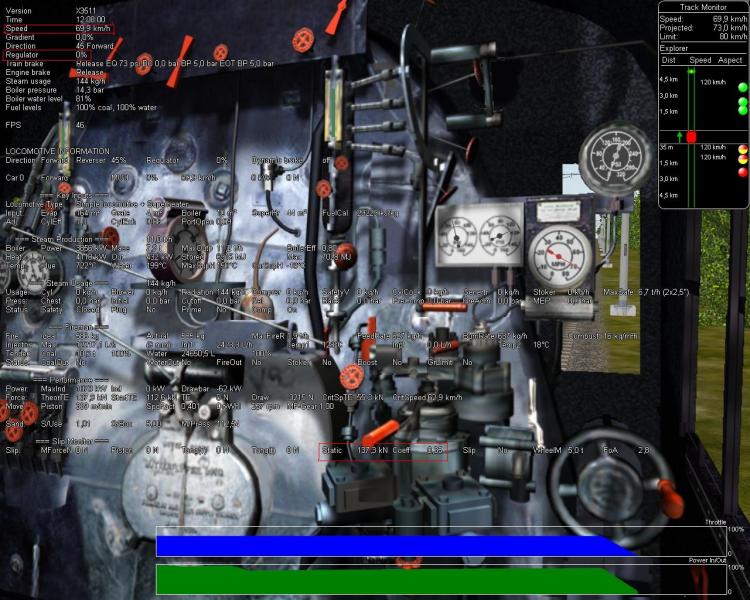
When you go speed higher than 10kmh locomotive no sliping.
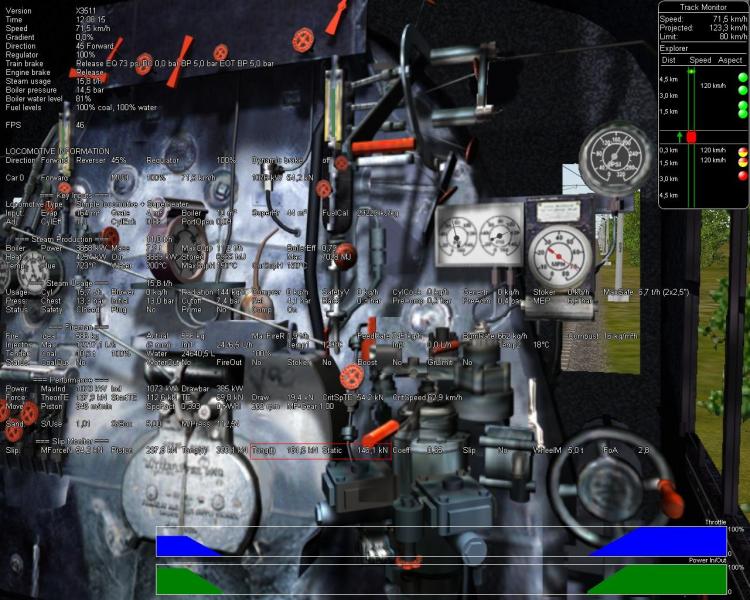
#25

Posted 12 April 2016 - 03:06 PM
Chapter 4 (p276) describes the slipping of steam locomotive.
 hroch, on 12 April 2016 - 03:34 AM, said:
hroch, on 12 April 2016 - 03:34 AM, said:
A component of static friction is the vertical thrust of the wheels onto the track (pg 279). The vertical thrust is proportional to the piston force.
So when the locomotive is stationary, the static friction will be equal to the adhesive weight of the locomotive (no piston force). Once the locomotive starts to move, the piston force starts to increase, hence vertical thrust increases, and thus static friction force increases.
 hroch, on 12 April 2016 - 03:34 AM, said:
hroch, on 12 April 2016 - 03:34 AM, said:
The vertical thrust is additive when running forward, and subtractive when running in reverse. (pg 279)
 hroch, on 12 April 2016 - 03:34 AM, said:
hroch, on 12 April 2016 - 03:34 AM, said:
When you go speed higher than 10kmh locomotive no sliping.
At higher speeds other components, such as the inertia of the moving parts (rod gear, etc ) need to be included into the model.
These components have not been added at this time, as the greatest danger of slip is likely to occur when the locomotive is starting.
The torque graph on pg 278 demonstrates this, as it shows the starting torque and the value at 80mph.
#27

Posted 20 April 2016 - 02:42 AM
#28

Posted 20 April 2016 - 02:29 PM
 copperpen, on 20 April 2016 - 02:42 AM, said:
copperpen, on 20 April 2016 - 02:42 AM, said:
Thanks for that.
 copperpen, on 20 April 2016 - 02:42 AM, said:
copperpen, on 20 April 2016 - 02:42 AM, said:
The NumWheels parameter is used and it is the one that sits in the ENG section of the ENG file.
In the adhesion model this value only has a secondary role. The tota weight on the drive wheels is the important value.
#29

Posted 30 April 2016 - 07:21 AM
Currently when wheelslip occurs in rain, the animation slows down during the time the throttle is being closed to the point where all animation ceases until the throttle reaches 9% or lower. At this point the animation reactivates. X3536
#30

Posted 30 April 2016 - 06:43 PM
 copperpen, on 30 April 2016 - 07:21 AM, said:
copperpen, on 30 April 2016 - 07:21 AM, said:
As the regulator (throttle) is closed the rotational force on the wheels will decrease as the cylinder steam pressure decreases. Hence the wheel animation should also decrease with a decreasing throttle.
 copperpen, on 30 April 2016 - 07:21 AM, said:
copperpen, on 30 April 2016 - 07:21 AM, said:
I don't appear to be experiencing this effect (as far as I can see) with my test stock, which is the Atlantic locomotive from the CTN site.
To assist me in reproducing the problem, can you use the above locomotive, and other stock from the test page to reproduce and accurately describe the problem. This will allow me to more effectively debug the code, and find any potential problems.
If the problem is not able to be reproduced with the Atlantic, then perhaps it is a locomotive setup issue, or issue with a particular locomotive type.

 Log In
Log In Register Now!
Register Now! Help
Help





